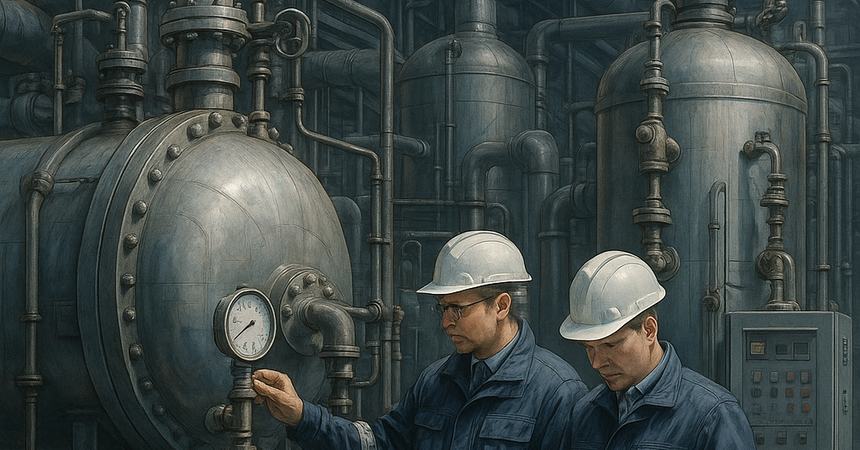- TR CU 032/2013 is a technical regulation of the Customs Union that regulates the safety of equipment operating under excess pressure above 0.05 MPa.
- The regulation is mandatory for manufacturers, importers, suppliers, and organizations operating such equipment within the EAEU.
- The document applies to pressure vessels, boilers, pipelines, safety devices, fittings, and assemblies that include pressure components.
- Its main purpose is to reduce the risk of accidents, ruptures, leaks, and any hazardous situations associated with the use of pressure equipment.
- Requirements include strength calculations, material selection, testing, technical documentation, and mandatory installation of protective devices.
- Conformity is confirmed through certification or declaration depending on the equipment hazard category.
- Tests and conformity assessment are carried out in accredited laboratories, and results are recorded in protocols and technical documentation.
- The manufacturer must implement quality control systems, ensure stability of equipment characteristics, and update documentation in a timely manner.
TR CU 032/2013 is one of the key documents in the field of industrial safety. Its implementation created a unified regulatory mechanism for all categories of equipment operating under excess pressure. This is crucial because such equipment is used in high risk industries such as energy, oil and gas, chemical production, heat power engineering, mechanical engineering, and municipal systems. Any design or operational error may lead to serious accidents, so the regulation establishes clear and strict requirements.
The document describes material selection criteria in detail, including chemical resistance, durability, and stability under temperature and pressure variations. It also focuses on strength calculations, load modeling, and structural validation under various operating modes. In addition to strength, it covers tightness, correct functioning of safety valves, stability of welded joints, and reliability of fittings.
According to the regulation, all equipment undergoes mandatory testing: hydraulic, pneumatic, climatic, vibration, and others depending on its purpose. These tests allow evaluation of real world performance and confirm product safety.
Marking plays a critical role. Each product must indicate full information such as working and maximum pressure, temperature, hazard category, manufacturing date, and serial number. This minimizes errors during installation and maintenance.
Conformity assessment is done through certification or declaration. Certification applies to equipment with higher hazard categories and includes inspection control, expert visits, and regular confirmation of production stability. Declaration is used for less dangerous categories but also requires a full documentation package and successful testing.
TR CU 032/2013 helps ensure a safe industrial environment and allows organizations to rely on equipment reliability. Compliance with this regulation is mandatory for placing products on the EAEU market.
